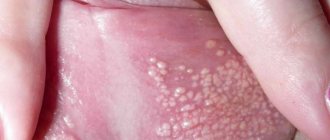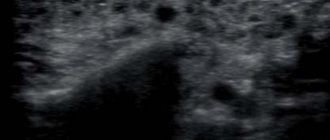Pulmonologist
Prokhina
Maria Egorovna
Experience 39 years
Pulmonologist
Make an appointment
Pulmonary edema is a pathological, very serious condition, which is characterized by the release of transudate into the lung tissue. As a result, gas exchange is disrupted, which leads to serious consequences, including death.
Emergency care for pulmonary edema is the only thing that can increase the patient’s risks of survival and recovery. A person in such a situation requires immediate medical attention.
Pulmonary edema itself is most often a complication that accompanies serious problems of organs and body systems, for example, the cardiovascular system, gastrointestinal tract, etc.
Causes
In fact, there are many causes of pulmonary edema - they are different for different diseases. Let us name, for example, a few general prerequisites:
- cardiosclerosis after a heart attack, acute myocardial infarction;
- hypertension, arrhythmia;
- heart failure;
- congenital or acquired heart defects;
- chronic bronchitis, lobar pneumonia, bronchial asthma;
- complications due to ARVI, measles, influenza, scarlet fever, whooping cough and other diseases;
- prematurity in newborns;
- serious kidney problems;
- traumatic brain injury, brain surgery, etc.;
- inhalation of toxic substances.
These and many other reasons are not direct factors contributing to the development of pulmonary edema. But against the background of such conditions, it can develop, which is necessarily taken into account during hospitalization with all of the above.
When to call an ambulance
To provide first aid for epilepsy, it is not always necessary to involve doctors. As a rule, attacks are fleeting. There are cases when compassionate citizens called the ambulance crew, but by the time they arrived they had already left the scene on their own.
In addition, for some, such situations happen several times a day. With such options, it is enough to know the basic principles of providing assistance, and if everything proceeds without complications, you can cope on your own.
In some situations, the help of medical specialists is vital for a patient with epilepsy.
The attack happened for the first time in my life
You cannot be sure how the body will react if it has not experienced such overexertion before. It is quite possible that epilepsy is manifesting itself right now (this can happen at any age). However, there is a danger that a seizure is a sign of some disease, the exacerbation of which requires the intervention of appropriately qualified specialists.
The victim is a child or elderly
The bodies of children and the elderly are most vulnerable to critical changes in health. Even if everything goes as normal, only doctors will be able to give an accurate conclusion regarding the condition of the body and further health risks.
Cramps in a pregnant woman
A neurological disease can be fatal to a child in the womb. If a woman is late in pregnancy, there is a risk of premature onset of labor.
There is a possibility of injury
During seizures, the patient may hit his head on a sharp corner or be injured during a fall. Even if it just seems to you that there is a risk of traumatic brain injury or any other injury, it is better to call specialists and keep the patient in place until the doctors arrive.
The patient remains unconscious for more than 10 minutes
It is important to check the patient’s clarity of consciousness after an attack, to find out whether he remembers his name or home address. If he does not regain consciousness on his own, there is no need to “help” him: hit him on the cheeks or splash water. It is also forbidden to try to bring people to their senses using such means as ammonia: any strong odors can provoke a second attack, which, compared to the one just suffered, can cause significant harm to health.
Epilepsy always carries the risk of irreversible changes in brain structures. If a person breathes but does not regain consciousness for more than ten minutes, it is important to organize professional medical assistance as soon as possible.
Make an appointment
Varieties
There are different types of pulmonary edema:
- fulminant. It develops extremely quickly, in a few minutes - the outcome in this case is only fatal;
- spicy. Symptoms increase over four hours and the risk of death is very high. Such swelling often occurs with heart attack, suffocation, and traumatic brain injury;
- subacute. The development of symptoms alternates between active and quieter stages. Occurs in liver failure;
- protracted. It can develop within twelve hours, even several days, and not have a clear manifestation. It manifests itself in heart failure, as well as chronic lung diseases.
Obviously, each option requires different actions. If the patient can still be saved, speed of response will be a key factor.
Schizophrenia symptoms and signs in women
At an early stage of the disease, the first symptoms in women manifest themselves in the form of hallucinations and delusions. The emotional background becomes unstable, depression and apathy arise towards everything that previously aroused interest. These signs may remain the only ones and exist for several years until productive symptoms appear. Patients and their relatives have no idea that the disease has already taken root.
Patients become unfriendly, strive for social isolation, avoid contacts, and often become irritated over trifles. The woman’s manner of speaking changes dramatically. She cannot explain to others what she wants to convey to them or limits herself to short phrases and takes a long time to select the right words.
Women with this diagnosis feel like they are being influenced by hypnosis, they can hear the voices of aliens, and often see pictures and even entire films in their heads. Patients complain of a shooting sensation, burning or drilling in the brain.
The feeling of attachment to loved ones and children is lost, the patient treats them as strangers. Women are more likely than men to be interested in magic and otherworldly forces. Therefore, they perceive their condition as the emergence of magical possibilities or the influence of magicians and sorcerers on themselves.
Symptoms
It is possible to describe the symptoms of pulmonary edema only in general terms, since certain types of pathology occur with blurred characteristics. Signs include the following:
- severe weakness;
- shallow, very rapid breathing;
- dry cough;
- dry wheezing;
- severe shortness of breath;
- puffiness of the face and neck;
- bubbling breathing and moist wheezing;
- foam at the mouth with a pink tint;
- lethargy, confusion;
- shallow breathing;
- thready pulse.
Some signs of pulmonary edema contradict each other for the reason that everything can start with one condition and end with another. For example, rapid breathing occurs for several minutes or hours, and then it weakens. In the fastest and most dangerous forms of edema, the patient's death occurs from suffocation (asphyxia).
Are you experiencing symptoms of pulmonary edema?
Only a doctor can accurately diagnose the disease. Don't delay your consultation - call
Prerequisites for the development of schizophrenia in childhood
The psyche of a small child is very vulnerable; his condition and mood largely depend on the people around him and the events taking place around him. The psychological perception of reality is established at an early age. If a deviation of the schizoid type is observed, doctors do not undertake to make a definitive diagnosis; they recommend waiting until adolescence.
The tendency to the disease in preschool age manifests itself specifically:
- the child is considered strange - he reacts inappropriately to events;
- often experiences unreasonable fear;
- becomes overly irritable and impulsive;
- when observing him, increased nervous excitability appears;
- bouts of crying that occur for no particular reason can last a long time;
- the child often moves from euphoria to apathy;
- he talks about his visions, hallucinations;
- the teenager is bothered by obsessive thoughts, he gets fixated on the same idea.
If there are several such negative manifestations, there is reason to think about visiting a psychiatrist. Deviations may be accompanied by personality degradation, which will fully manifest itself in adolescence. This may include dissatisfaction with appearance, delusions and hallucinations, motor dysfunction, suicidal thoughts and attempts to die.
Diagnostics
If the symptoms of pulmonary edema are not pronounced, additional studies are required in parallel with emergency care:
- biochemical screening. This is a blood test;
- study of blood gases;
- ECG, ultrasound of the heart;
- X-ray of the chest area;
- pulmonary artery catheterization.
In many cases, diagnosis of pulmonary edema is possible immediately - only based on the signs that appear visually in the patient and without additional examination.
Schizophrenia signs and symptoms in men
Symptoms of the disease in males are very similar to those in women. In the first stage, they experience discomfort due to hallucinations and delusional ideas. There is degradation of personality and loss of human appearance in the truest sense of the word.
A person becomes sloppy, stops washing and brushing his teeth, and eventually decides not to leave the house. The man has pronounced aggression and an increased level of anxiety. Sometimes this state can turn into panic, which is a concomitant symptom of depersonalization. The patient has a thinking disorder and various motor disorders.
Treatment
There is not and cannot be a single program for the treatment of pulmonary edema. Emergency care for a patient includes measures to reduce venous return to the heart and supply humidified oxygen. Often the patient is transferred to mechanical ventilation, and a tracheostomy may be performed.
Various drugs are also additionally administered: analgesics, diuretics, drugs that reduce pressure in the pulmonary circulation, drugs for the heart, antibacterial agents and much more. Further, treatment of pulmonary edema, if the attack is removed, comes down to treating the underlying disease that caused this pathology.
The prognosis for edema is very serious. Depending on the causes of pulmonary edema, mortality can range from 20 to 90%. The sooner the problem is identified, the higher the chances of recovery. But in many cases, the patient can only be saved by timely treatment of those diseases that contribute to the occurrence of pathology - such prevention of pulmonary edema, for example, is the only way to reduce the risks of the fulminant form of the disease, which in itself is already fatal and cannot be treated.
Pulmonary edema in the elderly
Biyarslanova Raisa Mavladinovna Therapist,
More about the doctor
Pulmonary edema is a life-threatening condition. Acute pulmonary edema without treatment is fatal in 100% of cases. Edema may be caused by impaired capillary permeability or increased intracapillary pressure. In this case, the fluid accumulating in the interstitium cannot be removed through the lymphatic vessels. In elderly and senile people, the clinical picture may be blurry, without characteristic signs, which leads to loss of time and aggravation of the situation. Elderly people at risk, as well as their family members, should be informed about the symptoms and first aid for a person with pulmonary edema.
Reasons for the development of pulmonary edema
If fluid accumulation is caused by increased capillary permeability, membranogenic pulmonary edema . It can be caused by:
- blood poisoning, severe chest injuries;
- pneumonia, high concentration of bacterial toxins;
- pancreatitis;
- entry into the bronchi and lungs of water and vomit;
- inhalation of smoke, toxic vapors of chlorine, mercury, phosgene.
Hydrostatic pulmonary edema is more common in older people . It can be called:
- chronic diseases of the cardiovascular system, especially heart failure ;
- impaired venous circulation in the lungs;
- pulmonary embolism, most often we are talking about thromboembolism;
- airway obstruction, for example, with bronchial asthma;
- blockage of lymphatic vessels.
The accumulation of fluid in the lungs leads to disruption of gas exchange. The patient tries to compensate for the resulting hypoxia by more frequent and shallow breathing. Shortness of breath develops . With a subsequent increase in fluid volume, the lungs become less elastic, the alveoli are filled with liquid content and cannot participate in the exchange of carbon dioxide and oxygen.
Types of pulmonary edema by speed of development
There are 4 types depending on the increase in symptoms:
- lightning fast – develops in minutes and ends in the death of the patient;
- acute – development time is 1-4 hours, requires emergency medical care, often leads to death;
- subacute – characteristic of intoxication, symptoms increase and decrease in waves;
- protracted – characterized by a prolonged increase in symptoms, which can develop from 12 hours or longer. Most often associated with cardiovascular diseases. The clinical picture is not clear until the last minute; patients often consult a doctor at the stage of bubbling breathing and acute hypoxia.
Regardless of the rate of increase in symptoms, pulmonary edema is a pathological condition that will not go away on its own. Signs of fluid accumulation in the respiratory system become more and more obvious every hour; ignoring the increasing shortness of breath against the background of a dry and then wet cough leads to a sharp deterioration in the patient’s condition.
Symptoms of pulmonary edema
The most typical clinical picture is observed with cardiogenic pulmonary edema . This is what is typical for most elderly patients. This condition is characterized by:
- shortness of breath at rest;
- cough with sputum, sometimes streaked with blood;
- foaming from the mouth;
- severe lack of air when taking a supine position - the patient is forced to sit or stand all the time;
- cyanosis, pallor of the skin and mucous membranes;
- cold sweat;
- wheezing in the lungs.
An increase in blood pressure may occur as a compensatory mechanism. The pulse is fast, and in many cases a gallop rhythm can be heard. At the peak of the attack, the patient is in a confused state of consciousness and may faint.
Diagnosis and treatment of pulmonary edema
If confirmation of the diagnosis is required, the patient undergoes an ultrasound or x-ray. Both of these methods allow you to quickly and accurately differentiate edema from an attack of bronchial asthma or pulmonary embolism.
Treatment includes immediate care to stabilize the patient and intensive care to improve circulation and cardiovascular function. Reducing fluid volume is achieved by administering intravenous or intramuscular diuretics, usually furosemide. The drug has two significant effects at once - it dilates the veins, improving venous outflow, and stimulates urination.
To combat hypoxia, fast-acting vasodilators - nitrates - are used. They are good because they improve blood circulation, but do not provoke oxygen starvation of the heart against the background of increased work of the heart muscle.
Antihypertensive drugs, inotropes, narcotic analgesics, and bronchodilators are also used to relieve swelling and normalize breathing, pulse, and blood pressure. Therapy for pulmonary edema necessarily includes oxygen inhalation. In some cases, mechanical removal of fluid through a puncture of the chest - thoracentesis - may be required.
Questions and answers
What causes pulmonary edema?
There are dozens of factors that contribute to the development of this pathology. They are associated with other diseases of different body systems. Clinical recommendations for pulmonary edema are largely determined by the situation.
Can pulmonary edema lead to death?
Yes, the risk of death in the case of such a pathology is very high, and for the fulminant form it is the only possible outcome of events. This is an extremely dangerous condition that requires immediate professional help.
How to treat pulmonary edema?
This is done exclusively in medical institutions, most often in intensive care. Only doctors know everything you need to know about the symptoms and treatment of pulmonary edema in adults or children - the pathology cannot be eliminated without special knowledge and skills.
What are the features of pulmonary edema in children?
Unlike adults, this pathology occurs much less frequently in children due to other diseases. The underlying cause is usually allergies or exposure to toxins. Or the cause may be congenital anomalies of various body systems.
Signs of schizophrenia
Official medicine finds it difficult to determine the exact causes that cause the development of schizophrenia. Long-term study of the mechanisms of the disease has not made it possible to identify specific stimuli for the deterioration of mental health. Somatic manifestations of the disease in childhood, adulthood and adolescence have significant differences. Therefore, a final diagnosis is possible only during the onset of puberty.
Among the most likely prerequisites for the development of a mental disorder, there are several main ones.
- Genetic predisposition.
The disease can be inherited from a close relative; approximately 10% of children in adolescence are diagnosed with this diagnosis if their mother or father has it.
- Hormonal dysfunction.
Schizophrenia is associated with impaired dopamine production. This hormone is a neurotransmitter that is responsible for the state of a person’s emotional sphere. If there is a pathology of the central nervous system, dopamine is produced in excess. At the physiological level, this causes intense mental overexcitation, in which a person constantly remains. The result is delusions, paranoid ideas, obsession, psychosis or hallucinations.
- The impact of viruses on the human body.
There is a category of pathogenic microorganisms that can destroy nerve cells. One of the most known pathological agents to science is the herpes virus. With good immunity, it can stay in the body for years without causing harm. If the patient suffers from various diseases of a chronic or infectious nature, viruses can manifest themselves, causing the manifestation of schizophrenia.
- Toxoplasmosis.
This is an indirect cause of the development of schizophrenia, but rather one of the risk factors. It is especially dangerous if a pregnant woman is infected: the fetus can develop pathologies, including diseases of the nervous system.
Common causes of schizophrenia include:
- alcohol, drug and other types of addiction;
- pathologies of intrauterine development;
- brain injuries that occurred during childbirth or throughout life;
- heredity;
- severe emotional shock;
- prolonged stay in a state of stress, prolonged depression.
Scientists believe that specific family attitudes are also the trigger for the development of the disease. Parents force the child to react to certain situations according to one scenario, while they themselves perform completely different actions. The dualistic attitude cannot be analyzed by a small child due to his age. Contradictions grow inside him, with which he is left alone. The constant search for answers to one's questions causes intrapersonal conflict, which over time can develop into a mental disorder.
How to quickly calm down
Aggression after alcohol in women and men is a common occurrence; this condition causes dissatisfaction in a person, he constantly runs into fights, insults, and humiliates. All this can cause unpleasant feelings among others, but there is no need to respond to an alcoholic, it is important to calm him down , this can prevent unpleasant consequences and strong fights.
Psychologists recommend at these moments to take your own will into a fist; there is no need to respond to aggression with irritability, this will only provoke the drunk. At the initial stage, you need to try to calm the drunkard down; you need to talk to him quietly and calmly. To do this, you should sit next to him, talk quietly, lightly touching him with your hand while talking. A woman must calm him down and instill confidence.
to a safe place as quickly as possible . At this moment, it is better not to remain alone with the aggressor, otherwise disastrous consequences may arise.
Experts say that when a person is very drunk, you should not respond to his aggression with irritability or rudeness, this can be disastrous . The psyche of a person who is in a state of intoxication is inadequate and unpredictable. Many even harmless words can cause even greater irritation and anger in a drunkard.
What does foamy discharge from the mouth look like?
The appearance of foamy liquid occurs during a chemical reaction of oxygen with saliva and gastric mucus. It is similar to soap formations, but may contain veins and inclusions. Color and consistency often help determine the root cause of the appearance.
The foam itself is not dangerous, but sometimes it acts as a symptom of diseases of the digestive system and other pathologies. The presence of violations is indicated by an increase in the amount of fluid coming out, more frequent attacks of vomiting, and the appearance of accompanying symptoms.








